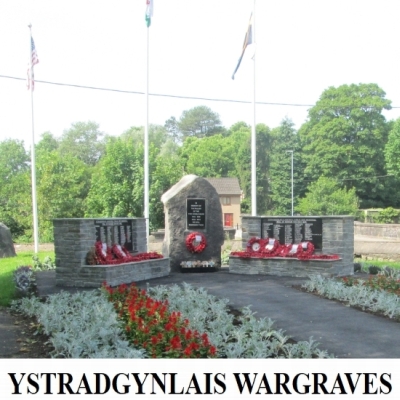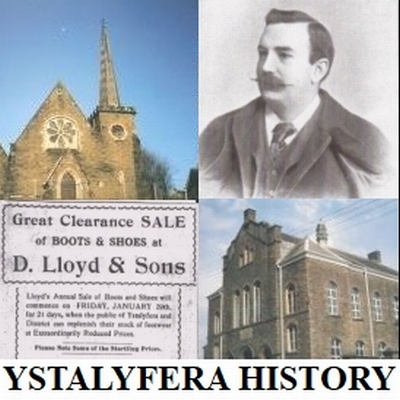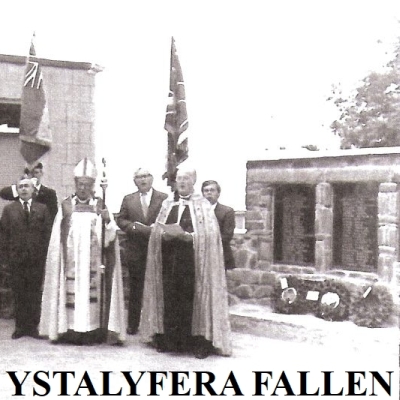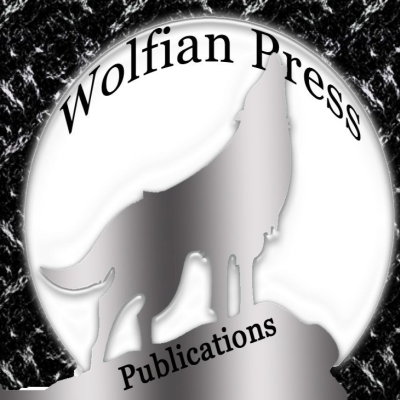William Gough
c1722 - 1760
William Gough was the third son of William Gough of Willsbury, Saint Briavels, Gloucestershire (1691-1773) and his wife Catherine Portrey (1698-1733), heiress to the Ynyscedwyn estate in Ystradgynlais. He was baptised at Chepstow on 8th February 1721, old-style, which would be 19th February 1722 as we see it now. His older brothers were Richard Gough Aubrey, senior (1718-1751) and the Reverend James Gough Aubrey (1720-1796). He had a younger brother George, baptised at Saint Briavels in April 1723 and attested to in a Lease and Release of 1723/24 when all four brothers are listed, but who died young. Another brother, John, must have been born after this date, and is remembered on a plaque in Saint Cynog's, as well as being listed as joint plaintiff in the Gough family's attempt in the mid 1750s to sell the Portrey estates.
William also had a sister Elizabeth, born in 1728. She married William Lucas and they had two sons, William Lucas (jnr) and James Owen Lucas, and one daughter Barbara Ann, who in 1796 married John Laugharne Popkin. A date of death for Elizabeth Lucas is uncertain; she last appears in the Ynyscedwyn estate papers in 1788, but appears to be mentioned in her brother, James Gough Aubrey's will, written in 1793, where he sometimes refers to her as 'my poor sister'. Another sister, Jane, is mentioned on the plaque in Saint Cynog's, but the mid 1750s legal case refers to Elizabeth as William senior's only daughter.
In estate papers, William is generally referred to either as William Gough, or as William Gough Junior, if his father is also involved in the transaction. He is also known to history as William Gough Aubrey, though the attestation of this is uncertain.
His older brother Richard had to take the additional surname Aubrey as a condition of inheritance of the Ynyscedwyn estate upon the death of the last remaining male Portrey, Christopher Portrey (junior) in December 1752. His next brother, James, also took the additional surname of Aubrey at some point, perhaps upon the death of Richard in 1759. Whether William officially added the Aubrey name I am uncertain, but it may have been adopted after the death of Richard as William was the only one of the brothers with any children and it might have been assumed they would eventually inherit Ynyscedwyn.
- Gough Family History
- - - Richard Gough Aubrey
- Wedding of 1867
- Yniscedwyn House
- Graves in St. Cynog's
- Belton, Uppingham
- Gough Memorial Windows
- Vicars of Ystradgynlais
- - - Rev. James Gough Aubrey
- - - Rev. Fleming Gough
- - - Rev. Walter Jones Williams
Although William Gough senior did not die until 1773, a Deed of Limitation for the Gloucestershire lands of the Gough family dated 1758 transferred those lands to William junior for life, thereafter to be held in a trust for his sons, and then for them to inherit the lands.
William Gough married Christiana Fleming, sister of Hezekiah Fleming in 1751, and together they had several children, including the aforementioned sons. He died on board the Penzance at Quebec on 2nd July 1760. This information was officially conveyed to his family in January 1761, as Ynyscedwyn estate paper D/D Yc 1213/1 is certification from the Navy Office of his death, dated 30th January 1761, by an R. Horne. However, since news of his replacement, due to his death, was published in The Scots Magazine 6th October 1760 (probably republishing lists from The Gazette), it can be assumed that the family was unofficially informed well beforehand.
I have not been able to determine whether William Gough was buried at sea, or at a cemetery on land, since the British were by July 1760 firmly in the possession of Quebec City. The British casualties from the Battle of Sainte Foy, in April 1760, and those from the Battle of the Plains of Abraham, the previous year, were buried in Hôpital-Général de Québec Cemetery, under the jurisdiction of the Parish of Notre Dame and by the Augustinians: each of the dead had the name, place of birth, and age recorded, if known. It is possible that a naval captain dying in July 1760 might have also been buried with them?
William Gough apparently left no will. Ynyscedwyn estate paper D/D Yc 1213/2 is letters of administration, which is the official document issued by a probate office in cases where someone dies without a will. In this case, probate is granted to his widow.
Family of William Gough
Son of William Gough and Katherine née Portrey
William Gough married Christiana Fleming 'on or about' the 19th June 1751 when he was around 29 years of age. She was the sister of Hezekiah Fleming, then Captain in the 34th Regiment of Foot, who in 1757 was appointed Lieutenant Colonel in the 73rd Regiment of Foot, and in 1777 would attain the rank of Major General. Theophilus Jones incorrectly calls Christiana the daughter of Hezekiah Fleming, but his will makes clear the relationship: "my sister Christiana Gough".
The marriage took place abroad in Minorca, presumably at Mahon, William Gough being at the time 'lieutenant of His Majesty's Ship Fougeux' [sic] as recorded in Ynyscedwyn estate record D/D Yc 1211/1-3 where Hezekiah Fleming and Helen Hope, spinster, attest to it in a 1781 affadavit.
William Gough and Christiana Fleming were married by Reverend James Moore, chaplain to Colonel Dejean's Regiment, then upon duty in the island of Minorca. She is recorded as a spinster of Minorca, indicating that Captain Hezekiah Fleming had family with him in the garrison there. The witnesses are recorded as being William Bennet, then a lieutenant aboard the HMS Fougueux, later captain of HMS Lennox, Hezekiah Fleming, and Lady Hope Fleming, identified as Hezekiah's wife, whom he had married in London in 1749.
They report that a few days after the wedding the couple sailed for England, a letter included in the record by Rev. James Moore indicating this was on or shortly after the 21st June 1751.
William and Christiana had at least five children. Of these, William, the middle of three sons, who was born in the Summer of 1755 (Baptised August 10th 1755) died young.
Richard William Gough was the eldest son, born in 1752. He is generally listed as the first Gough squire of Ynyscedwyn, from when his uncle, James Gough Aubrey died in September 1796, and took the additional surname Aubrey himself, being known as Richard Gough Aubrey. He married Jane Williams, née Wynter, in September 1789 but they had no children. He died on 26th January 1808 after what his gravestone in Saint Cynog's cemetery, Ystradgynlais, makes sound like a painful lingering illness.
Fleming Gough was the third-born son of William and Christiana, taking his Christian name from the surname of his mother's family. He was born in 1756, if you calculate his year of death 1835 minus his given age of 79 - however, his baptismal record at Saint Briavels is for January 11th 1758, making a date of birth in late 1757 most likely. Fleming Gough was ordained to the diaconate of Saint Briavels, Glouctershire on Sunday 24th September 1780 (Ynysecedwyn estate paper D/D Yc 1207) and first received a post as a priest at Steeple Ashton in 1782. By 1788 he was living in Briton Ferry and was possibly Curate there. He became Rector of Ystradgynlais, in succession to his uncle, James Gough Aubrey, in 1796, formally appointed 1797.
Reverend Fleming Gough married Martha Taylor (sometimes given as Taylour) in 1785 and they had four children - Harriet Gough (1788-1868), who married Howell Jones Williams, Susannah (Susan) Gough (1790-1868), who died unmarried, William Fleming Gough (1792-1796) who died a child, and Richard Douglas Gough. The Reverend Fleming Gough succeeded as squire of Ynyscedwyn upon his brother's death in 1808, and died on the 27th October 1835 at Yniscedwin House. He was succeded in the estate by his only surviving son, Richard Douglas Gough.
Elizabeth Gough was the daughter of William and Christiana. She died in Bristol according to a source. Her name is sometimes given as Eliza. She was baptised on 24th August 1752 at Titchfield, Hampshire, a location presumably related to William's service in the Royal Navy at that time.
Anne Harriet Gough was born in 1754 and died on 12th February 1821, unmarried. She is remembered on the gravestone in Saint Cynog's Church, Ystradgynlais. Church records at Saint Briavels, Gloucestershire, record her baptised as Anne Henrietta, on August 1st 1754. Her place of death is given as Yniscedwin House, though she is recorded on the grave as having been living at Briton Ferry.
The wills of their uncle Hezekiah Fleming (1781) and their mother Christiana Gough, nee Fleming (1794) both make bequests to Elizabeth and (Anne) Harriet, showing that neither of the sisters married, both bearing the surname 'Gough' until their deaths.
William's widow, Christiana Gough's will was proved in 1794. This will at the National Archives calls her "of Brecon", implying that she was living there, but she is listed as dying in Briton Ferry between February and March 1793, being buried on the 5th March. It is quite probable that she was living with, or staying with, her son Fleming Gough at this time. It appears that her grave, together with that of Fleming Gough's young son who died, had decayed so much by the early 2010s that their inscriptions were now unreadable, and they were apparently among the stones placed flat under a newly gravelled area outside Saint Mary's.
Hezekiah Fleming died in 1783 and was buried in Monmouth, as 'Eziakiah Fleming', in the same grave as his wife, Lady Ann Hope Fleming who had died in November 1763. Very few gravestones from this period survive, and a survey of the churchyard confirms that no sight can be had today of any grave that would match theirs.

Click to view full-size - The children of William Gough (senior) and Catherine Portrey, thus showing William Gough (junior) and his siblings.
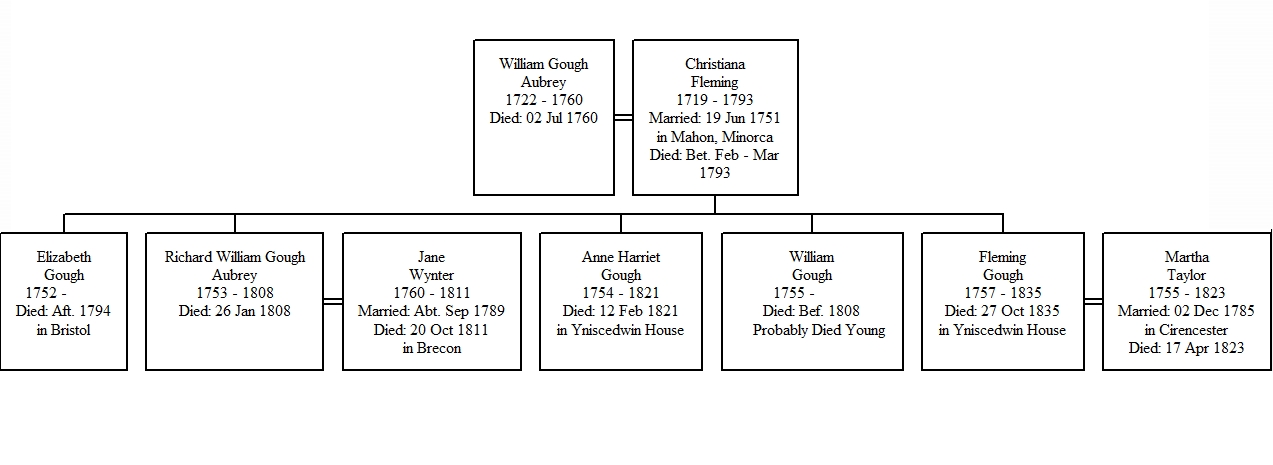
Click to view full-size - The children of William Gough (junior) and Christiana Fleming.
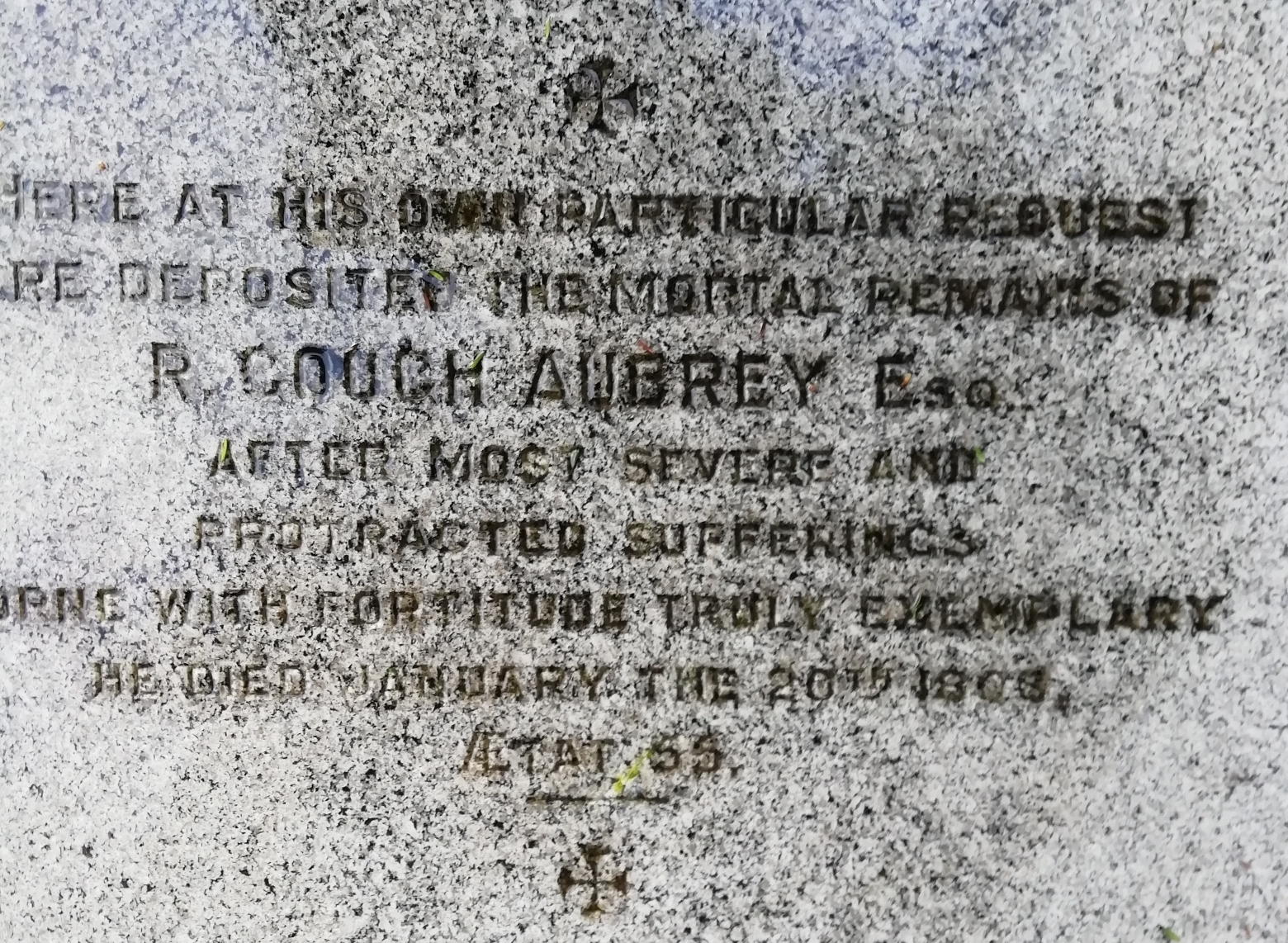
The grave in St. Cynog's churchyard, Ystradgynlais, of Richard Gough Aubrey, eldest son of William and Christiana Gough:-
Here at his own particular request
Are deposited the mortal remains of
R Gough Aubrey Esq
After most severe and
Protracted sufferings
Borne with fortitude truly exemplary
He died January the 20th 1808
Aged 55
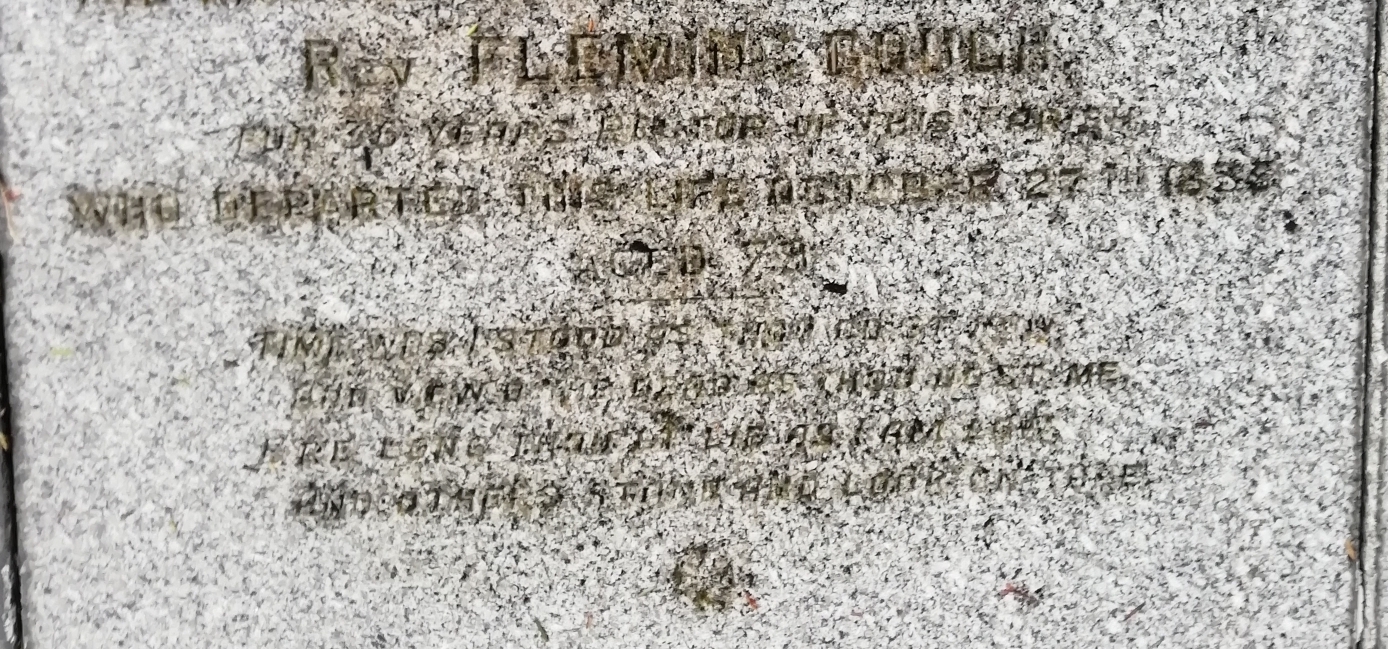
The grave in St. Cynog's churchyard, Ystradgynlais, of Reverend Fleming, third-born but second-surviving son of William and Christiana Gough:-
Rev Fleming Gough
For 36 years Rector of this Parish
Who departed this life October 27th 1835
Aged 79
Time was I stood as thou dost now
And viewed the dead as thou dost me
Ere long you lie as low as I
And others stand and look on thee
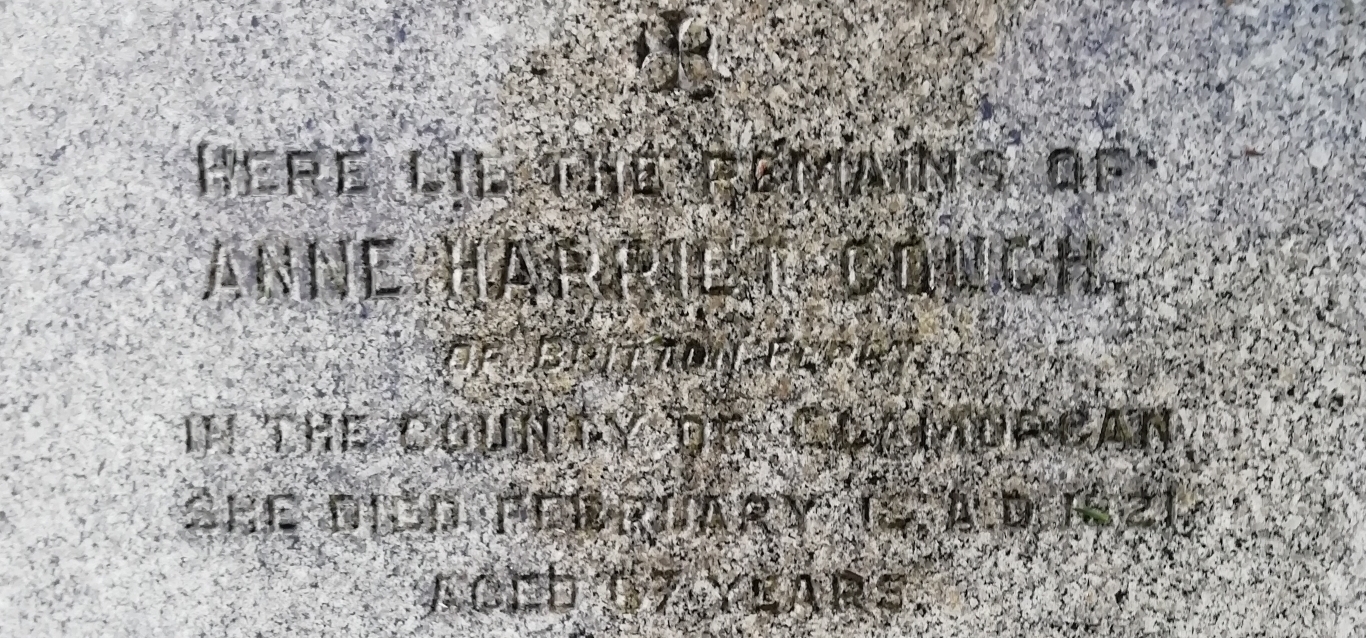
The grave in St. Cynog's churchyard, Ystradgynlais, of Anne Harriet Gough, daughter of William and Christiana Gough, and sister of the Reverend Fleming Gough:-
Here lie the remains of
Anne Harriet Gough
of Briton Ferry
In the County of Glamorgan
She died February 12th A.D. 1821
Aged 67 Years
Naval Career
1738 - 1760
William Gough made a career in the Royal Navy. The information in this section is compiled from ThreeDecks.org, from the book Royal Navy Officers in the Seven Years War by Cy Harrison from the records within the Ynyscedwyn estate papers at West Glamorgan Archive Service with the identifier D/D Yc 1203/1-6, and from documents held at the National Archives.
William Gough's first known service was on the 16th February 1738 when he would have been 15 or 16 years of age, in which he served as the Captain's Servant aboard the Falmouth, a 50-gun 4th rate dating from 1730. Her captain in this period would have been William Douglas, who died aboard in 1741. William Gough held the rank of Midshipman after August 1740, and would have participated in the operations against Cartagena in 1740-1741.
In December 1741, William Gough was transferred to the Sutherland, another 50-gun 4th rate ship, newly acquired in October of that year. Between 27th November 1743 and 7th June 1744 he served as Midshipman aboard the 50 gun 4th rate Hampshire, based in the Channel.
On 7th June 1744, at around the age of 22, he passed the Lieutenant's Examination and was initially posted to the 8-gun sloop Swift on 7th July 1744. On the 11th January 1745 (our style) he became 3rd Lieutenant and Lieutenant at Arms upon the Torrington. This was the 44-gun 5th rate newly acquired by the Royal Navy in 1742-43, rather than the previous vessel, broken up in 1744. At the time of his appointment, the Captain of the Torrington would have been William Boys, though he was soon replaced by John Hardy. He was promoted to 2nd Lieutenant aboard the Torrington in March 1745 (our style) and served in that role until February 1747 (our style).
William Gough then served aboard the Fougueux, first as 3rd Lieutenant from December 1748, then was appointed 2nd Lieutenant of this ship on 8th May 1751. The Fougueux was a 64-gun French 3rd rate ship of the line, captured at the 2nd Battle of Cape Finisterre in October 1747 and subsequently inducted into the Royal Navy.
The next step in William Gough's career was to be appointed to the Kingston first as 2nd Lieutenant from February 1755, then on 30th September 1755 as 1st Lieutenant. The Kingston was a 60-gun 4th rate ship of the line. Wikipedia records her as originally constructed in 1697, but rebuilt in 1719 and in 1740. However ThreeDecks.org records the 1740 ship as being purpose-built, with her keel laid down in 1736/7 and being first commissioned in September 1740. The answer most likely lies between the two - her rebuild in 1740 being from the bottom up, using the same timbers but having totally deconstructed the ship.
At the National Archives is a record with reference HCA 32/176A/10. These are papers, partly from the Admiralty Prize Court, recording that on 11th September 1755, off Portland, two ships described as tenders of the ship of the line Royal George captured the French merchant ship La Conception. The two tenders are listed as the Elizabeth commanded by Lieutenant William Burr, and the Tasker commanded by Lieutenant William Gough.
William Gough is then reported on the 7th October 1755 to have been appointed 1st Lieutenant aboard the Ramilies (Ramillies, but then often spelt with only one L), a 90-gun ship of the line. This was Admiral Byng's flagship, under Captain Arthur Gardiner, and sailed for the Mediterranean in April 1756 and was then present at the Battle of Minorca on 20th May 1756.
William Gough achieved the rank of Commander in June 1756, at the age of 32. The Ynyscedwyn estate papers record him appointed to the Fortune, an 18 gun sloop recaptured from the French in 1746, between the dates of 6th to the 26th June 1756.
William Gough was then appointed Captain and commanding officer of the Experiment, a 24-gun sixth rate, although ThreeDecks.org list that this was only for the period the 26th June 1756 to 4th July 1756. His appointment was by Admiral John Byng, commander of the British fleet in the Mediterranean, whilst that of the succeeding captain was by Edward Hawke, who took over command of the Mediterranean fleet from Byng after June 1756, when the latter was called home in disgrace for failing to relieve the garrison on Minorca.
William Gough's last appointment was as Captain of the Penzance in 1758. The Penzance was a 44-gun 5th rate completed in 1747. ThreeDecks.org record his length of service in this role as being from 31st August 1758. His death aboard the Penzance is recorded in the Ynyscedwyn estate papers (D/D Yc 1213/1-2) as 2nd July 1760, at Quebec.
March 1756 - Preparing for deployment

On the 18th March 1756, William Gough signed a deed of attorney appointing his wife, Christiana Gough, to collect all of his wages and moneys, in whatever form those may be paid by the Admiralty.
[ Ynyscedwyn Estate paper DD-YC-1212 held at the West Glamorgan Archive Service ]

He gives his information as "William Gough, first lieutenant of His Majesty's Ship Ramilies, now lying at Spithead", where Admiral Byng was gathering the fleet prior to sailing to the Mediterranean and the fateful Battle of Minorca.
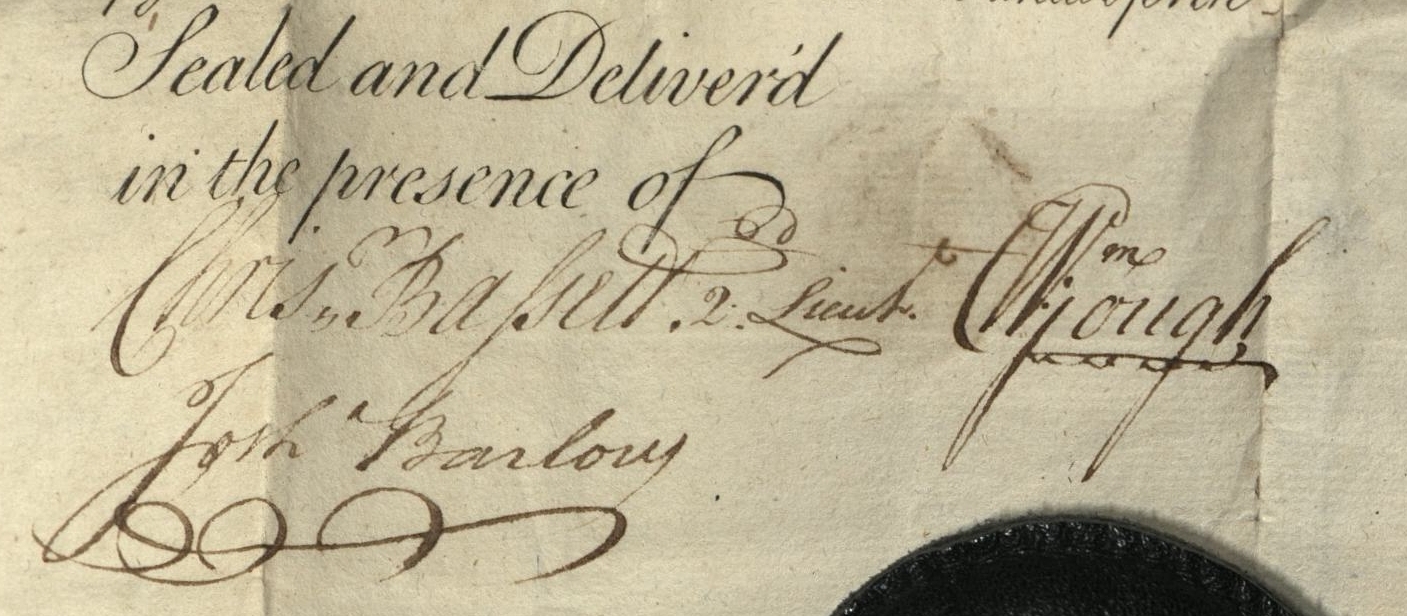
The document is witnessed by Christopher Bassett, signing as 2nd lieutenant, having being transferred to the Ramilies on 7th October 1755, the same date as William Gough, and who on June 26th 1756 would take over command of the Fortune from William Gough. The other signatory is unclear - it might say John, or Josh, Barlow. Neither threedecks.org nor Cy Harrison's book 'Royal Navy Officers of the Seven Years War' have a listing for him, but he gives no rank whilst bearing witness, so may never have progressed from being an Able Seaman.
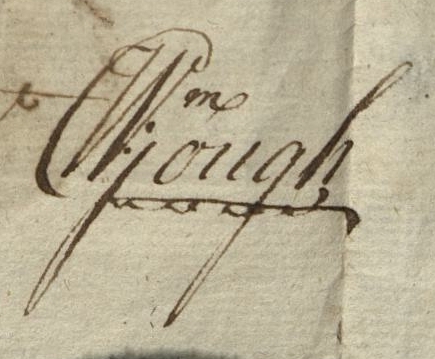
William Gough's signature to the document - a definite example of his own handwriting, since the filling out of the information in the rest of it may have been done by the Captain's Clerk aboard the Ramilies.
1756-57 - Mediterranean, Minorca & Byng
William Gough's Naval Career
In March 1756, Admiral John Byng began gathering a fleet at Spithead to head into the Mediterranean and effect the relief of the garrison at Minorca from French attack. This fleet sailed on the 5th April, and engaged the French fleet under La Galissoniere at the Battle of Minorca on the 20th May 1756. The battle was inconclusive, and Byng did not land the troops he was carrying but retired upon Gibraltar. Here he would learn of the furore that his failure to raise the siege of Minorca had caused back in Britain, and soon find himself recalled, and replaced by Admiral Edward Hawke. Back home, he found himself on trial for his life, in a court martial that would play out across January 1757, and lead to his eventual execution by firing squad.
William Gough was 1st Lieutenant of the Ramillies, Admiral Byng's flagship. The excerpts below cover the events of this period as far as possible from his perspective.
From the Derby Mercury, Friday 19th March 1756:-
Since my last, arrived at Spithead the Culloden, Captain Ward, Defiance, Captain Andrews, and Kingston, Captain Parry, to join Admiral Byng's Squadron for the Mediterranean.
From the Caledonia Mercury, Tuesday 23rd March 1756 comes a list of the ships appointed to sail under Admiral Byng's command:-
By Letters from Spithead, dated on Tuesday last, we are told the following Ships are appointed to sail for the Mediterranean under the Command of the Admirals Byng and West; Ramillies, Admiral Byng; Buckingham, Admiral West; Culloden, Intrepide, Captain, Trident, Revenge, Kingston, Lancaster, and Defiance, all Ships of the Line
From the Ipswich Journal, Saturday 27th March 1756 comes news that Byng has hoisted the blue flag and that Lord Robert Bertie (here misnamed George) has arrived with troops to be transported for the relief of Minorca:-
Extract of a Letter from Portsmouth, March 21
Since my last, arrived here Admiral Byng, and hoisted the Blue Flag at the Main-top mast Head of the Ramillies, Captain Gardiner, and is preparing the fleet to sail as soon as possible.
Saturday arrived three Companies of Lord George [sic] Bertie's Regiment of Welch Fusiliers, and will this Day be followed by the Remainder. It is strongly insisted on here that this Regiment is to embark on board Admiral Byng's Fleet.
From the Ipswich Journal, Saturday 8th May 1756 we learn that Byng sailed on the 5th April 1756:-
N.B. We are sorry to find, upon looking back into old Papers, that Admiral Byng did not sail from Spithead before the 5th of last Month, and that he was obliged to come again to an Anchor at St. Helen's on the 7th.
From Cy Harrison's book "Royal Navy Officers of the Seven Years War" comes a listing of the ships under Byng's command. This list includes the ships that we see William Gough going on to command briefly after the Battle of Minorca:-
Royal Navy Deployment - May 1st 1756
The Mediterranean
2nd Rate Ships of the Line - Ramillies (90), Flag of Admiral Byng
3rd Rate Ships of the Line - Buckingham (70), Flag of Rear Admiral West; Culloden (74), Captain (70), Revenge (70), Trident (64), Lancaster (66), Intrepid (64)
4th Rate Ships of the Line - Kingston (60), Defiance (60), Princess Louisa (60), Deptford (50), Portland (50)
5th Rate Ships of the Line - Chesterfield (44)
6th Rate Ships of the Line - Dolphin (24), Phoenix (24), Experiment (24)
Sloops - Fortune (14)
Fire Ships - Blast, Proserpine
Of these, the Deptford, Portland, Princess Louisa, Chesterfield, Proserpine and Dolphin were already in the Mediterranean under Edgecumbe, and rendezvoused with him at Gibraltar, whilst the Phoenix was at Leghorn getting information, and similarly would rendezvous with Byng.
The following account of the Battle of Minorca comes from Wikipedia's page on Admiral John Byng and is reproduced under the Commons license:-
Byng sailed from Gibraltar on 8 May 1756. On 19 May, Byng's fleet appeared off of Port Mahon and he endeavoured to open communications with the fort. The French squadron, however, appeared before he could open up a line of communication with any fort officer.
The Battle of Minorca was fought on the following day. Byng had gained the weather gage, which both forces had attempted to gain. However, the two fleets were not parallel with one another. Byng called for a lasking manoeuvre, meaning that all his ships would turn in unison and, with the wind behind them, sail straight toward the enemy bow first. But Captain Thomas Andrews of the Defiance, the lead ship due to the angled approach, did not steer directly for the first French ship in the enemy's line but, instead, steered a parallel course. The Portland, Buckingham, Lancaster and one other followed the example set by the Defiance. It took two cannon shots from Byng's flagship, the Ramillies, and some ten to fifteen minutes for the Admiral to redirect the lasking. But by this time, the French Admiral ordered his ships to pull more sail and lead away from Byng's attempted lasking. This delay cost Byng the element of surprise, but it also allowed the French to make the rest of the battle a "running fight", as Captain Augustus Hervey of the Phoenix later called it.
Because of the angle, the leading van took the brunt of the damage. The last ship in that squadron, the Intrepid, was heavily damaged, losing three of its masts including the main. The next three ships, the Revenge, Princess Louisa and Trident, did not pass the now listing Intrepid to keep the sanctity of the battle line. Instead, those ships nearly collided with one another, with Captain Frederick Cornwall of the Revenge eventually navigating his ship between the Intrepid and the enemy.
Byng's battle line was broken. It cost Byng twenty to thirty minutes to reform the line and once the line was reformed, the French pulled full sail and expediently pulled away. Byng was told by Captain Arthur Gardiner, his flag captain, that he could set full sail for the enemy, thus providing an example to the three bottled-up ships on what to do. Byng declined, recalling that Admiral Thomas Mathews had been dismissed for doing so at the Battle of Toulon in 1744. After four to four and a half hours, neither side lost a ship in the engagement, and casualties were roughly even, with 43 British sailors killed and 168 wounded, against French losses of 38 killed and 175 wounded.
Byng remained near Minorca for four days without establishing communication with the fort or sighting the French. On 24 May, he called a War Council of his own where, by unanimous voting, Byng's fleet would return to Gibraltar for repairs, succours, sailors and more marines for the garrison. The fleet arrived at Gibraltar on 19 June, where they were reinforced with four more ships of the line and a 50-gun frigate. Repairs were effected to the damaged vessels and additional water and provisions were loaded aboard. But, before his fleet could return to sea, another ship arrived from England with further instructions, relieving Byng, Fowke and several others of their command and ordering a return to home.
On arrival in England, Byng was placed in custody. The garrison resisted the Siege of Fort St Philip until 29 June, when it was forced to capitulate.
From Admiral Byng's defence at his trial and court martial comes some indication of William Gough's actions during the Battle of Minorca:-
About the same Time, the Princess Louisa's Boat dropt on Board with a Letter from Captain Noel, acquainting me that he had lost a Leg, and desiring that an Officer might be sent to command the Ship. I immediately sent Captain Gough, then my first Liuetenant, with Directions, in his way, to carry my orders to Captain Amherst of the Deptford, who was attending the Intrepide to take her Place in the Line; and I made the Chesterfield's Signal to attend and assist the Intrepid then fallen a-stern out of her Station in the Line.
The Fleet laying to, the Ships that had received Damage in the Action refitting.
In the Morning I ordered the Officer of the Watch to view the Situation of the crippled Ships as they appeared to him, and to minute down the Particulars, and to give me a copy of it, which he did as follows.
The Captain with her Fore-Yard and Fore-Topmast down, no Main Top-Gallent Mast up, and Main topsail Yard unrigged, laying ac-ross upon the Cap, and the Sail unbent.
The Defiance, with her Main-Yard, and Fore-top gallant Mast down, Main-top sail furled, and Fore-top sail doubled reefed.
The Portland with her Fore-Yard down, and Fore and Main-top sails down upon the Cap.
The Intrepid with jury-top Masts.
I ordered Surveys on the Damages received by the crippled Ships in the late Action, and on their Sores; and gave Captain Lloyd an order to command the Princess Louisa during Captain Noel's Illness, who had lost a Leg in the late Action; and Lieutenant Gough an Order to command the Chesterfield during Captain Lloyd's Absence.
How long William Gough commanded the 44-gun 5th Rate Chesterfield for is unknown, though he was doing so as a First Lieutenant, effectively breveted to commander (lieutenant commanding), and it was unlikely to be for more than a period of days.
Subsequent to the action, William Gough achieved the rank of Commander and was appointed to the Fortune, which had accompanied Byng's fleet. His period of command began on the 6th June 1756, the Fortune's previous commander, Benjamin Marlow, moving to take command of the Dolphin.
On the 26th June 1756, William Gough was then appointed Captain and commanding officer of the 24-gun sixth rate Experiment, replacing James Gilchrist. Christopher Bassett, who had been 2nd lieutenant on the Ramillies replaced him in command of the Fortune on 4th July 1756.
William Gough's command of the Experiment is listed as having ended on the 4th July 1756. It is notable that the succeeding captain, John Bladen Tinker, was appointed by Admiral Edward Hawke.
The Antelope (55) had been sent out by the Admiralty on 16th June, and arrived at Gibraltar on 3rd July 1756, carrying orders that the flag officers, Byng and Temple West, and the entire complement of lieutenants from their flagships Ramillies and Buckingham return to England, the former in disgrace and the latter as intended witnesses. William Gough was thus one of forty passengers on board the Antelope when she departed on 9th July, arriving at Spithead on the 26th July. Admiralty orders to recall all lieutenants of the Ramillies also explain why his first period as captain of a ship ended on 4th July, when he would have been informed of the content of the orders carried aboard the Antelope.
William Gough was questioned at the trial and court martial of Admiral John Byng on Wednesday 12th January 1757. A transcript of the proceedings kept by Charles Fearne, Judge-Advocate of His Majesty's Fleet was published as "The trial of the Honourable Admiral John Byng, at a court martial" by the Lord Commissioners of the Admiralty. William Gough's question and answer session is on page 77.
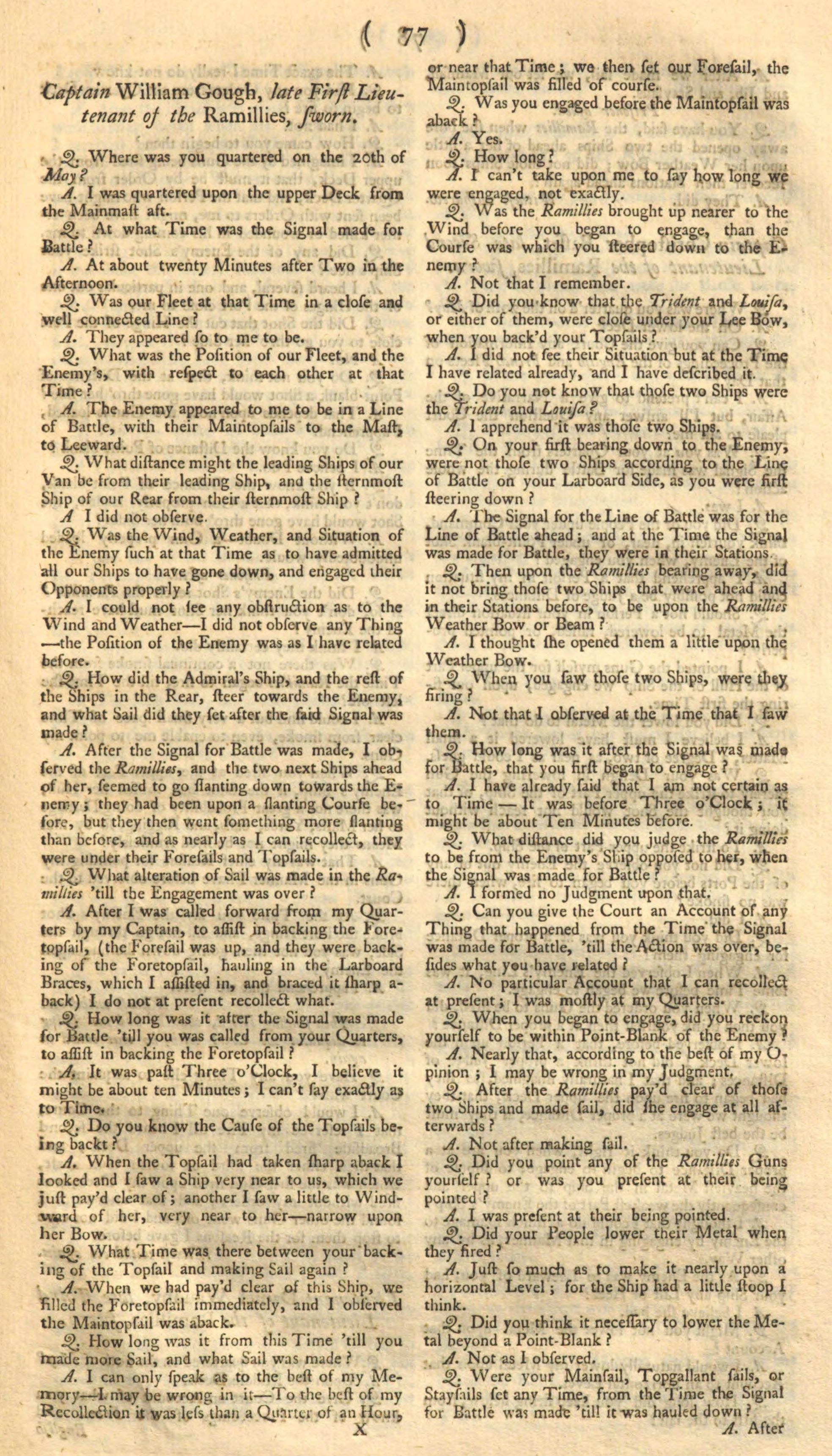
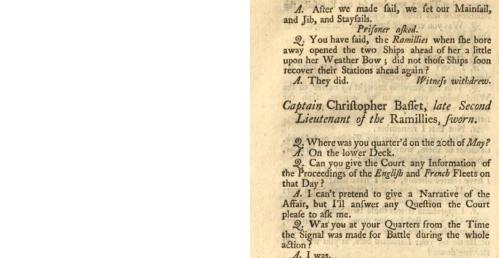
The above transcript is as near to William Gough's own voice that we have yet come. As can be seen he was followed in his evidence by Christopher Bassett giving his. A summary of their evidence was published in the Leeds Intelligencer of Tuesday 25th January 1757:-
Captain Gough, First Lieutenant of the Ramilies, being sword, said, that at the Time of the Signal being made for engaging, the Fleet appeared in a close a regular Line, that two Ships, which he believed to be the Trident and the Louisa, were under their Lee Bow, could not say at what Distance the Ramilies was from the Enemy at the Time of the Signal for engaging, being mostly at his Quarters, but believed when they began to engage that they were nearly at Point Blank with the Enemy.
Captain Bassett, 2nd Lieutenant, being quartered upon the Lower Deck, could not answer to the Distance, nor how long they continued firing, said that several of the Enemy's Shot struck the Sides of the Ramilies, and one in particular cut one of the Hinges of the Ports close to him, but did not afterwards go thro' her Sides, but must have done so if it had been properly loaded, said that as the Enemy's Shot reached the Ramilies, he doubted not but her Shot reached them.
In addition James Norman, Midshipman during the battle, lieutenant by the time of the court martial, mentioned William Gough's activities during the engagement in his own testimony:-
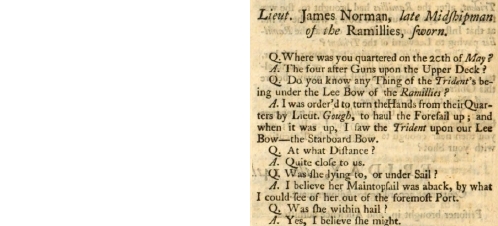
Admiral Byng was found guilty and executed by firing squad upon the Monarch on 14th March 1757.
William Gough's activities for the rest of 1757 are unknown. He did not receive a new posting, to the Penzance, until August of the following year. He certainly visited home, as his wife Christiana gave birth to their youngest child, Fleming Gough, in late 1757.
In Command of the Penzance
1) Baltic Convoys: August 1758 - December 1759
The Penzance was a 44-gun 5th rate completed in 1747. She was a 1745 Establishment 44-gunner, constructed to that pattern, and was built at Chichester, Sussex, by Vernon Chitty. Her captain immediately prior to William Gough was Thomas Ward, who commanded her from the 19th January to the 31st August 1758.
The Ipswich Journal for Saturday 12th August 1758 records the arrival of the Penzance at Hull, bringing in ships from the Baltic Convoy. This important duty of trade protection was to be Captain William Gough's assignment also, lasting into the early part of 1760.
The Isis and Penzance, Men of War, are arrived at Hull with several ships under their Convoy from the Baltick.
The Dolphin Man of War arrived at Hull last Saturday, to take under Convoy the Hamburgh Fleet.
Whilst William Gough took over the captaincy of the Penzance on 31st August 1758, it is not clear how long it was before she sailed again. The next newspaper reports I have been able to find on her, has her arriving in the Sound on 12th May 1759 with the outward-bound convoy of trade to the Baltic. The newspaper reports imply that she returned home, then went out again to pick up the homeward-bound convoy of trade from the Baltic, sailing with them back to England on the 31st July 1759.
From the Newcastle Courant, 2nd June 1759:-
They write from the Sound, that the Baltick Fleet, outward-bound, under Convoy of the Penzance and Dolphin Men of War, arrived there the 12th instant. The Men of War were to return home in seven Days.
From the Newcastle Courant, 18th August 1759:-
Letters from the Sound of the 31st past say, that the British homeward-bound Fleet, consisting of 64 Sail, under the Convoy of His Majesty's Ships Dolphin and Penzance, sailed from thence that Day early in the Morning with a fair Wind.
The Caledonian Mercury for Saturday 8th September 1759 reports:-
His Majesty's Ship Penzance with the trade from the Baltic is arrived at St. Helen's.
St. Helen's were the outer roads from Spithead, implying that the Baltic traders were on the Southern coast, near Southampton. Whether these are the same ones that departed the Sound on 31st July, I am uncertain, and whether perhaps if they were, they went to someplace else first?
The Sussex Advertiser 24th September 1759 reports that the above ships arrived at Plymouth on the 11th September,
On the 11th instant the Penzance Man of War arrived at Plymouth, with the Trade under her Convoy from the Downs.
The Caledonian Mercury of 3rd December 1759 carries reports from the Sound (between Denmark and Norway) dated the 11th November:-
Letters from the Sound of the 16th instant advise, that his Majesty's ship Penzance, with the trade from the Baltick, was there detained by contrary winds, and to get intelligence of Commodore Thurot's squadron; and that two Swedish ships, one Ernest Webner, master, round to Lisbon, and the other Joram Rusch, for the Streights, both from Stockholm were lost in the Cattegate; and two Dutch galliots were lost on the Needings, one laden with tar for Amsterdam, and the other with Salt from St. Ube's.
Various spellings abound for places at this time, and the Needings are sometimes called the Nyding, whilst Cattegate is what we might call Kattegat. Commodore Thurot was a French commander based out of Dunkirk, and obviously Captain Gough didn't want either his own ship, or the trading vessels under him, to run into Thurot's men of war.
The Manchester Mercury 1st January 1760 carries a letter dated the 8th December 1759:-
Extract of a Letter from Elsineur, dated Dec 8
"I am glad to advise with certainty that M. Thurot got to Bergen the 17th ult. and remained there on the 20th with only three Ships of his Squadron, and a small Prize, the other three having been separated from him in a Gale of Wind, and thought to be put into Port more to the Northward; he was supposed to remain in Harbour till they could all be assembled. His Majesty's Sloop Grampus joined Captain Gough off the Nyding the 4th instant. An English Man of War, as well as Mr Allemes was at Mandal eight Days ago."
The Sussex Adveriser 17th December 1759 reports on the safe arrival of the above convoy:-
The Penzance Man of War, Captain Goff, is arriv'd in Yarmouth Roads from the Sound, with about 55 Sail of Merchantmen under her Convoy, some of which are since arrived in the River. There were seventy nine Sail came out, Part of which are arrived at Hull, &c.
It appears that this was the end of William Gough's convoy duties, and at the beginning of February 1760 the Penzance was listed as one of a fair number of ships at Plymouth.
From the Chester Courant 5th February 1760:-
Ships of War now in Plymouth harbour, viz, Barfleur, Colchester, Windsor, Ramillies, Valiant, Temple, Rippon, Bienfaisant, Foudroyant, Faulkland, Kingston, Penzance, Achilles, Shrewsbury, Sapphire, Melampe, Firm, Actaeon, Venus, Scorpion, Pallas, Fortune, Torbay, Nottingham, Revenge, Brilliant, Nightingale, Juno, Unicorn, Duke, Maidstone, Rochester, Success, Leostoff, and Peggy.
Given the gap between this article and the next to mention the Penzance it is probable that she was now in Plymouth to fit out for the journey across the Atlantic that would form the next, and as it turned out final, phase in William Gough's career.
In Command of the Penzance
2) Across the Atlantic to Quebec: March to July 1760
Piecing the story of the Penzance's crossing of the Atlantic together requires posting some of the following newspaper articles out of sequence.
From the Derby Mercury 27th June 1760:-
Extract of a Letter from an Officer at Quebec, to his Friend in London, dated May 25, 1760.
I am commanded by my Father to acquaint you, that he have had a very bad passage to this Place. The Day after we sailed from St. Helen's the Ships from Plymouth joined us, and as the Wind was fair, we went to Sea directly (March 12) and got out of the Channel. In a few Days the Penzance was leaky; we lost Company with her and the Repulse in a very hard Gale of Wind, but hope they got safe to Newfoundland or Halifax.
On the 1st May we saw the North Part of Cape Breton, and forced our Way through Leagues of loose Ice in the Gulph of St. Lawrence. On the 4th we met a Schooner, Express from Quebec, who acquainted us that a French Army of 14,000 Regulars, Indians, and Canadians, and four French Frigates, were going to retake that Place, and that Governor Murray had been beat by the French and more than 1000 of the Garrison killed and wounded. We were at that time 130 Leagues from Quebec; Commodore Swanton made all possible haste to get up the River, but had a very Gale at N.W. On the 4th we met another Express at the Island of Bice, who informed us that we had not 3000 Men left at Quebec. that the French General had threatened to storm the Town, and put all to the Sword, if they did not surrender, but that General Murray was determined to defend the Place to the last Extremity. On the 15th at Three in the Morning, we left the Island of Bice, and tho' we were 150 Miles from Quebec, we came to anchor before the City by Eight at Night.
As the above article makes clear, the Penzance was not with the squadron when it arrived at Quebec. What had become of her?
From the Leeds Intelligencer 8th July 1760
Boston, May 19th - His Majesty's ship Penzance which was bound to join Commodore Lord Colville's fleet up the river St. Lawrence, having sprung a leak, was obliged to go into Halifax.
From the Dublin Courier 8th September 1760, comes a report of a letter from Quebec, dated 1st July 1760:-
Extract of a letter from Quebec, dated July 1.
"By the Penzance we have advice, that there are two French ships of war and frigates arrived in the bay of Chaleurs, with troops on board from France, in order to build a fort there. The Prince of Orange and Rochester, with the Eurus and another frigate, are cruising thereaboutsl so it's likely we shall have some news of them soon. The Falkland is at Isle Beck, the Pembroke at Coudre, and the rest of the ships here. Lieut. Colvill, of the Trident, in an armed schooner, and some other lieutenants in shallops, went up the river Sagueny, where they took the privateer schnooner that had taken so many vessels, and destroyed those prizes she had there, which they could not bring off. The intelligence of her being there was given by an Indian and his squaw, who came on board opne of the ships, and drew a plan of the river. General Murray sets out in three or four days for Montreal, with the Diana and the Porcupine, and eight floating batteries..."
The above article shows that the Penzance coming round from Halifax to enter the Saint Lawrence for Quebec (City) was key to informing the British there of the presence of newly-arrived French warships in their rear.
The Scots Magazine of Monday 6th October 1760 is the first publication I have been able to find mentioning the death of William Gough. It comes in a list of promotions:-
Commanders opf men of war: Captain John Boyd, son of Thomas Boyd of Piction, Esq, of the Penzance, of 44 guns, now in the river St. Lawrence, advanced to that command by the Lord Colville, on the death of Captain Gough.
As well as being the first mention of William Gough's death, it is also the last mention of him I have been able to find in any publication.
Calendar and Dates
Julian to Gregorian
Prior to 1752, the New Year began on March 25th meaning that, for those living then, the year 1750, for example, consisted of March 25th-31st, then April, May, June, July, August, September, October, November, December, then January, February, and March 1st to 24th.
Thus, when looking at original documents it needs to be understood that January 1744, for example, comes 6 months AFTER July 1744. In William Gough's case, this explains why he passed his lieutenant's examination in June 1744, and was later created 3rd lieutenant in January 1744. January was towards the end of the year.
When reporting dates prior to 1752, I have kept them as is for March 25th to December 31st, but changed the year to how it would now be seen in the Gregorian calendar for dates January 1st to March 24th. Thus, although the Warrant of Appointment for William Gough as 3rd Lieutenant to the Torrington says on the document "11th January 1744", I have recorded it in his service record as being January 1745. From time to time, I note this with (our style), where the year in question would have been the one previous, as people at the time would have seen it.
It should be noted, that to be 100% accurate a Julian calendar date should have 11 days added onto it to give a Gregorian calendar date. I have not adopted this above, and if a date is given as, for example, 8th May 1751, then I have kept it as 8th May 1751. Partly, this is because I do not know whether dates from other websites have been amended or not, so have kept all dates as I found them. Only years have been altered, as described above.
Further explanation of this can be found at:-
https://threedecks.org/index.php?display_type=sitedata
A partial converter between the calendars can be found at this location (it does not convert years though):-
http://aulis.org/Calendar/Old_&_New_Style_Dates.html
Sources & Useful Information
Online Resources for Historians & Genealogists
Ynyscedwyn Estate Papers (held at West Glamorgan Archive Service)
https://archiveshub.jisc.ac.uk/search/archives/95dd982a-7943-30b7-83bc-e615e82f6ba5
Clergy of the Church of England Database (Up to 1835)
https://theclergydatabase.org.uk/
Forest of Dean Family History Trust (Free Registration)
https://forest-of-dean.net
ThreeDecks.org
https://threedecks.org
British Newspaper Archive, from the British Library (subscription necessary):- https://www.britishnewspaperarchive.co.uk
Free BMD - Births, Deaths and Marriages (from 1837 onwards)
https://www.freebmd.org.uk/
Welsh Newspaper Archive (1804-1919)
https://newspapers.library.wales/home
The book 'Royal Navy Officers of the Seven Years War' by Cy Harrison, available to buy online at:- https://www.helion.co.uk
National Archives Discovery website:- https://discovery.nationalarchives.gov.uk/
The Trial of the Honourable Admiral John Byng (online book) https://babel.hathitrust.org/cgi/pt?id=nyp.33433009406202
Admiral Byng: His Rise and Execution by Chris Ware
www.amazon.co.uk/Admiral-Byng-His-Rise-Execution/dp/1844157814
